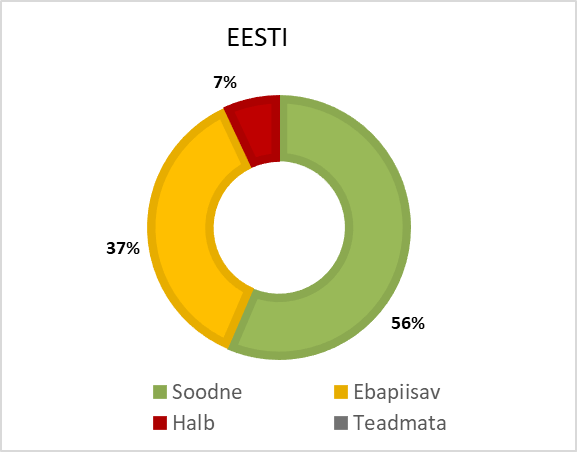There are 60 habitat types in Estonia that we must protect and preserve on Estonian territory

The pan-European Natura 2000 network of protected areas was established on the basis of the European Union (EU) Birds Directive and the Habitats Directive.
Annex I of the Habitats Directive lists the natural habitat types in need of protection. Areas that occur in different locations but have similar habitat type characteristics are Natura 2000 habitats, i.e. habitats under the Habitats Directive. These are habitats that are endangered in Europe and therefore need protection to survive. The Habitats Directive therefore provides a classification of habitats of conservation value.
There are 60 habitat types in Estonia that we must protect and preserve on Estonian territory. We have more coastal, forest, and grassland habitats and fewer bog, freshwater, outcrop, and marine habitats. Among the habitat types in the Habitats Directive, a distinction is made between priority or particularly endangered habitat types marked with an asterisk (*): such as Western Taïga (9010*) or boreal Baltic coastal meadows (1630*).
According to Article 17 of the Habitats Directive, EU Member States are required to report to the European Commission (EC) every six years on the status of the habitat types. The latest reports are based on data from systematic national monitoring and, where appropriate, additional inventories [1]. The report provides information on the distribution and area, structure and functions of the habitat types, and the changes that have taken place, as well as listing the main risk and impact factors and assessing future prospects.
The status assessments have so far been submitted three times: in 2007, 2013, and 2019. They show that in the period 2006–2018, the ratio of habitat types in favourable condition in Estonia has increased. According to the 2019 estimate, 56% of habitats are in a favourable condition and 44% are in unfavourable condition; 7% of them, or four habitat types, are in a bad condition. There are no habitat types of unknown status in Estonia. Habitats in bad condition are Western Taïga forests (9010*), fennoscandian deciduous swamp woods (9080*), fennoscandian wooded meadows (6530*), and alkaline fens (7230) [2].

Last modified: 15.11.2021
__________________________________________________
[1] Looduskaitse arengukava aastani 2020. Keskkonnaministeerium. 2012.
[2] https://www.envir.ee/sites/default/files/Mets/elurikkusest_juhtkogule2020sept28.pdf